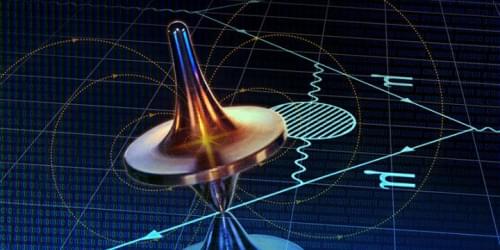The experimental value of the muon’s magnetic moment disagrees with theoretical predictions, but some of those predictions also disagree with each other—a problem theorists are working to resolve.
The magnetic moment of the muon, which describes how this electron-like particle wobbles in a magnetic field, has been a stubborn nut for particle physicists to crack. The experimentally determined values of this parameter have long disagreed with those from theoretical predictions, a trend that continued with a recent result from the Muon g-2 experiment at Fermi National Accelerator Laboratory in Illinois (see Research News: Mismatch with Standard-Model Predictions Reaches 5 Sigma). Such a discrepancy is exciting, as it could provide a hint of new physics that might resolve some of the outstanding problems in particle physics. However, the size of the discrepancy depends on which group of theorists you talk to. Resolving that theoretical discrepancy is currently the top goal for researchers in the muon-moment community.
“On the theory side, we have a lot of work to do,” says Aida El-Khadra from the University of Illinois at Urbana-Champaign. She is the chair of the Muon g-2 Theory Initiative—a collective of theorists and experimentalists working to determine what value the standard model of particle physics predicts for the muon’s magnetic moment. A few years back, the initiative seemed to be closing in on a single number [1]. But in 2021 a rift opened between the predictions of two separate methods for calculating the muon’s moment, leaving theorists without a clear prediction. “The ball is in our court, and we are working hard to get it back over the net,” El-Khadra says.









Comments are closed.